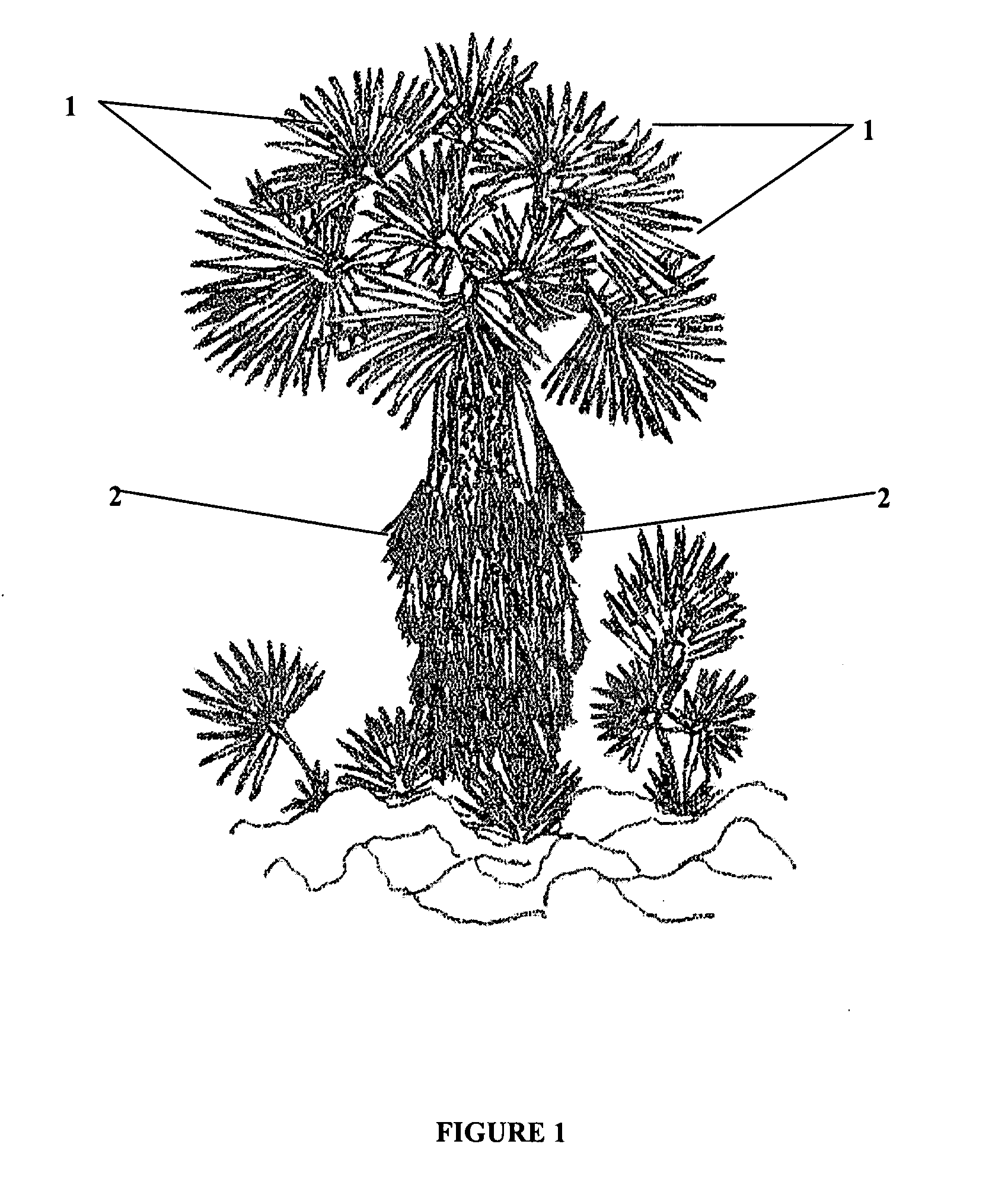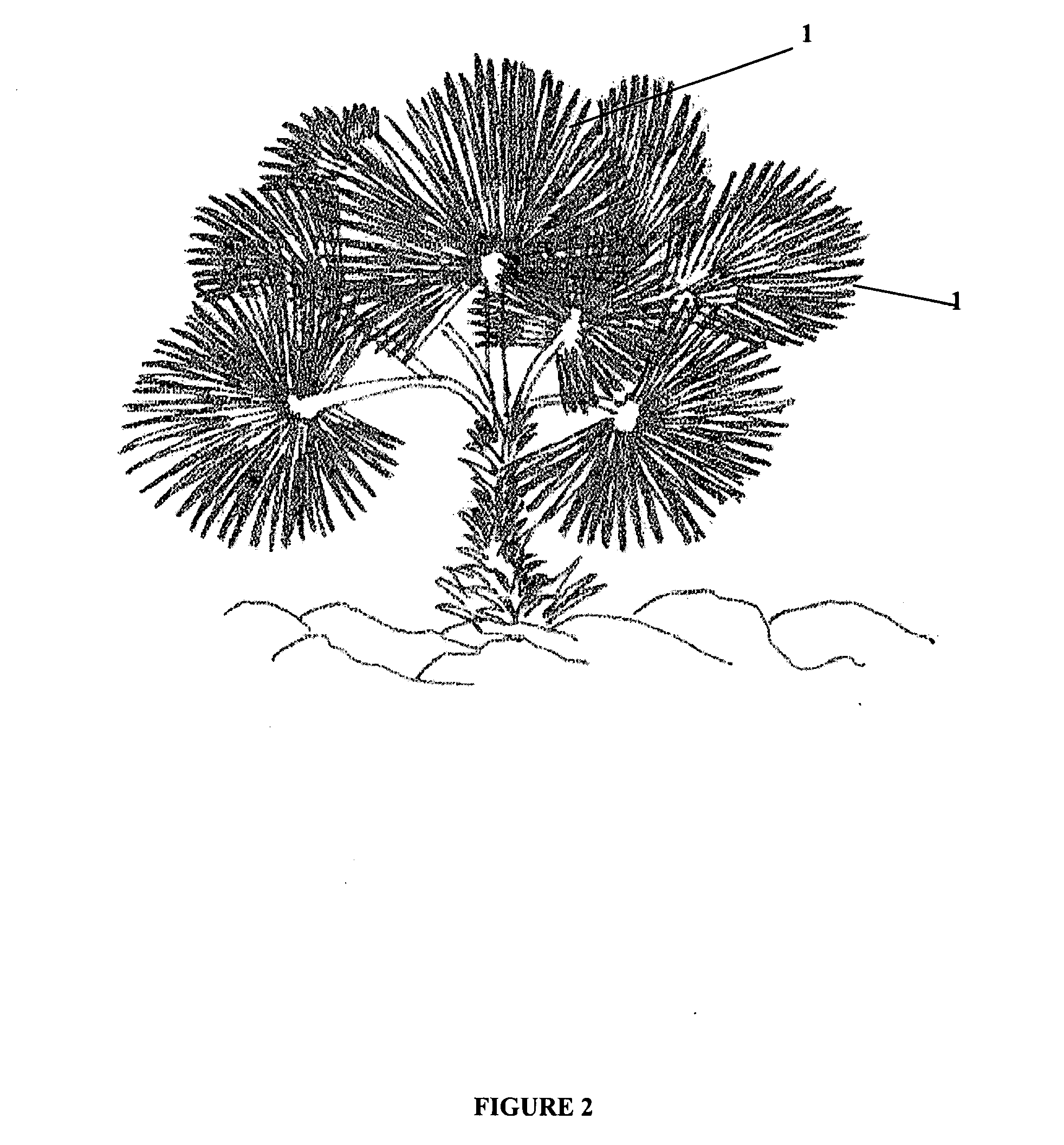Procedure to manufacture palm roof tiles for rustic roofs and the obtained product
- Summary
- Abstract
- Description
- Claims
- Application Information
AI Technical Summary
Benefits of technology
Problems solved by technology
Method used
Image
Examples
Embodiment Construction
[0033]FIGS. 1 to 6 correspond to the plant called Brahea dulcis, which has simple leaves like a fan, green in the fascicle and pale in the back, divided into 40 to 60 segments that measure 40 to 50 cm in length; the leaves 1 are concentrated in the top end of the stem and going down there are some fallen leaves 1. The leaves have marginal teeth 2 2.4 cm in length; the palm leaf presents hanging inflorescence in a raceme shape, which are 1 to 3 m in length.
[0034]Brahea dulcis is the most abundant species of the Arecaceae family and can be found in many calcareous soils located from 900 to 1900 m above sea level. Popular names include “hat palm”, “sweet palm”, “fan palm”, “common palm”, “apache palm”, “pochitla palm”, and “soyal” or “soyate”.
[0035]When the leaves are ripe 4 they have a fan shape and after they are cut they shrink 5.
[0036]To avoid shrinking a stone or other heavy object is put on them 6.
[0037]FIG. 7 shows how roofs are constructed using pressed palm leaves, where they ...
PUM
 Login to View More
Login to View More Abstract
Description
Claims
Application Information
 Login to View More
Login to View More - R&D
- Intellectual Property
- Life Sciences
- Materials
- Tech Scout
- Unparalleled Data Quality
- Higher Quality Content
- 60% Fewer Hallucinations
Browse by: Latest US Patents, China's latest patents, Technical Efficacy Thesaurus, Application Domain, Technology Topic, Popular Technical Reports.
© 2025 PatSnap. All rights reserved.Legal|Privacy policy|Modern Slavery Act Transparency Statement|Sitemap|About US| Contact US: help@patsnap.com



